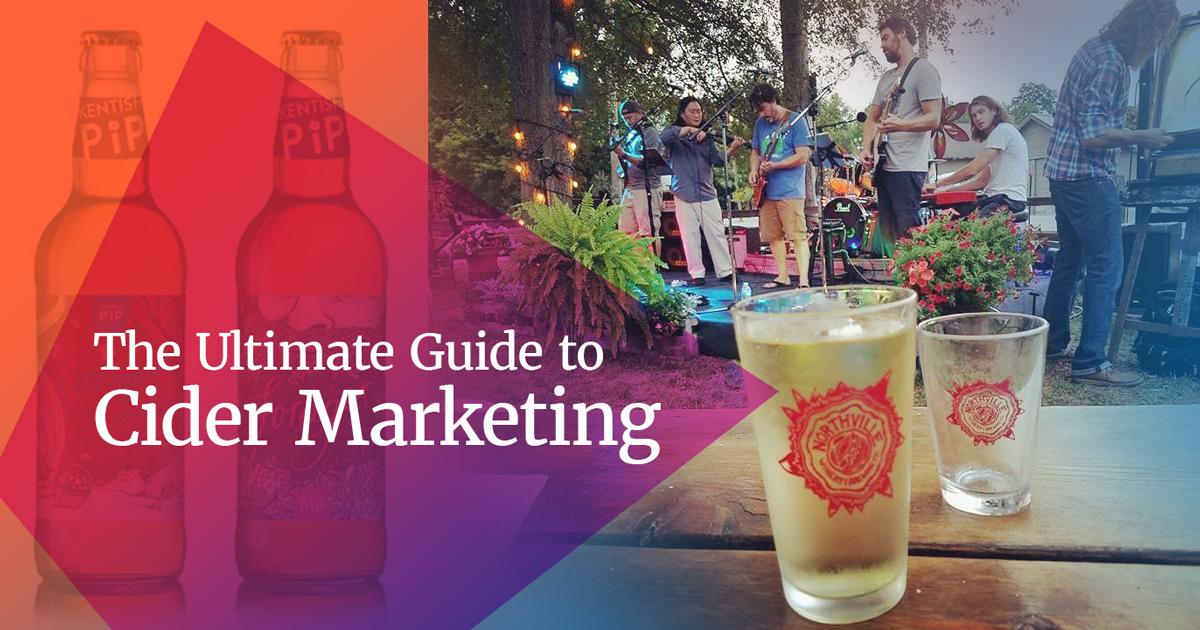So, you’ve started your own cider company. You picked the perfect time to do so. Cider popularity is growing enormously, with dollar sales up 39 percent from 2015-2016, and it’s projected to continue growing rapidly (Draft Magazine). If you’re intimidated by looking around every corner and seeing a new cider brewery, try not to be. This just means your industry is booming!
What it also means, however, is that getting your cider brand’s name out there is going to require some extra work on your part. You’ll have to up your game, working with the best cider marketing tactics and experimenting with strategies that might not work. Daunting, we know. That’s why we’ve spoken to some of the best minds in cider from all parts of the process, and compiled the essentials for developing a successful cider marketing campaign. Take a look:
Share Your Story
 As consumers in 2017, many of us are inherently trained to distrust the “big corporation”. In order for people to trust your brand, they need to be able to connect with it emotionally. This is where telling your story comes in. Joel Elder, founder of Quinta Essentia Alchemy, a full-service craft spirits consultancy, told us:
As consumers in 2017, many of us are inherently trained to distrust the “big corporation”. In order for people to trust your brand, they need to be able to connect with it emotionally. This is where telling your story comes in. Joel Elder, founder of Quinta Essentia Alchemy, a full-service craft spirits consultancy, told us:
“…You’re telling the story. The further you get from the producer, the more it becomes…bullsh*t. You have to be someone who can actually answer questions and provide the moment when the consumer feels like they participated in something instead of just being sold to.”
For the most part, people are actively looking for a reason to like your brand. A compelling back story about the origins of your cider business is the best way to give them a reason. Gabe Cook, The Ciderologist, pointed out to us, “ever-increasingly, the more discerning consumer wants authenticity.” He clarified, “A backstory can be of assistance if it’s truly authentic. It doesn’t have to be a long-standing heritage; it can be a drive or passion that is true and real.”
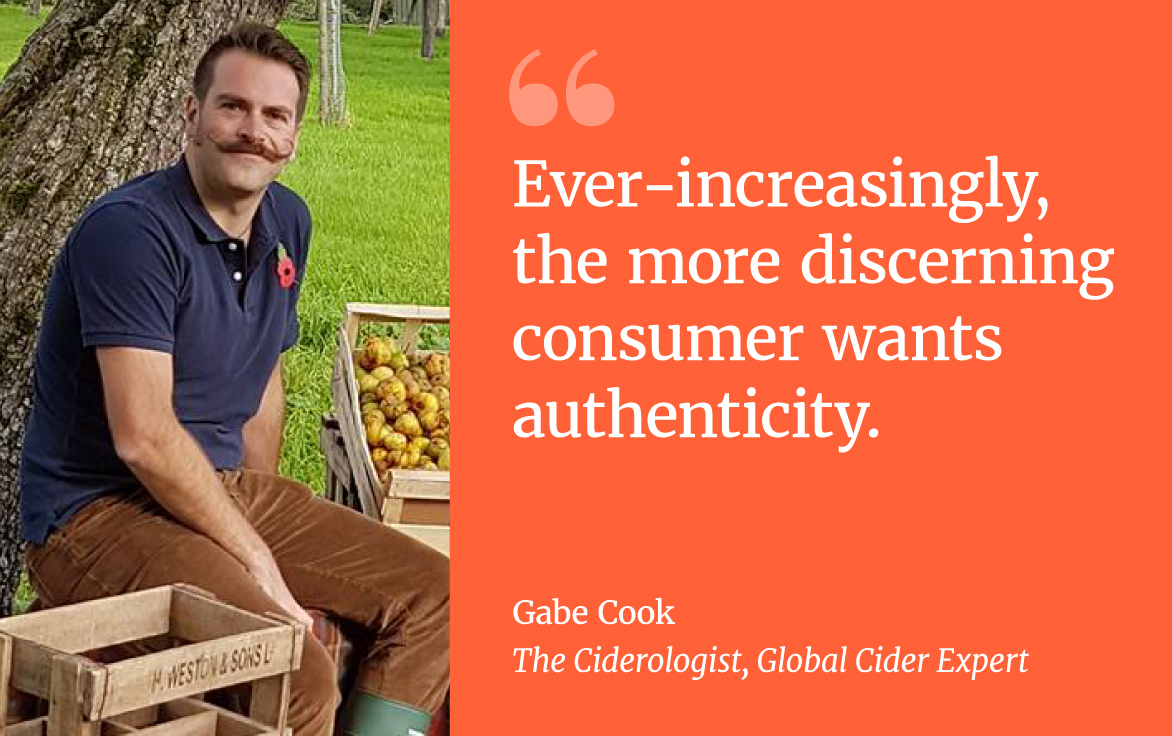 No need to fabricate an elaborate backstory that makes your brand sound good, because, according to Joel Elder, “If you don’t believe what you’re saying, the cracks will show.” Select what stands out most about your brand, and share that with the community. Do a portion of the proceeds for one of your ciders go to a charity organization? How many tries did it take to strike the perfect blend of your original cider? People are genuinely curious. Don’t give the community another cheesy, embellished story based on hollow truths and no drive; Take Joel’s advice: “Authenticity resonates so much more…”
No need to fabricate an elaborate backstory that makes your brand sound good, because, according to Joel Elder, “If you don’t believe what you’re saying, the cracks will show.” Select what stands out most about your brand, and share that with the community. Do a portion of the proceeds for one of your ciders go to a charity organization? How many tries did it take to strike the perfect blend of your original cider? People are genuinely curious. Don’t give the community another cheesy, embellished story based on hollow truths and no drive; Take Joel’s advice: “Authenticity resonates so much more…”
Design Creative Labeling and Packaging

If you take a look around, you’ll notice that a cider brewery is popping up on nearly every corner, and every local apple orchard has molded itself into a cidery. This is great for the cider industry but bad for cider marketing, since it becomes difficult to differentiate from brand to brand. According to Draft Magazine, “37 percent of adults ages 25-49 are unable to name a cider brand.” Of those who can name a brand, a combined 13 percent name Mike’s Hard Lemonade or Redd’s Apple Ale, neither of which are ciders.
That’s a huge void of opportunity for cider brands to connect with their audience that isn’t being fulfilled. Elder pointed out, “The intent would be that you get to be the one [selling your product to the consumer based on its merits and taste], but the reality is they’re going to pick something up based on the look”. Cook also emphasized to us, “Drinking cider, it’s an experience. It’s not just about the liquid. If you’re drinking out of a kick ass can and you’re with your friends, that’s a good feeling… and it’s the kind of feeling you want associated with your drink.”
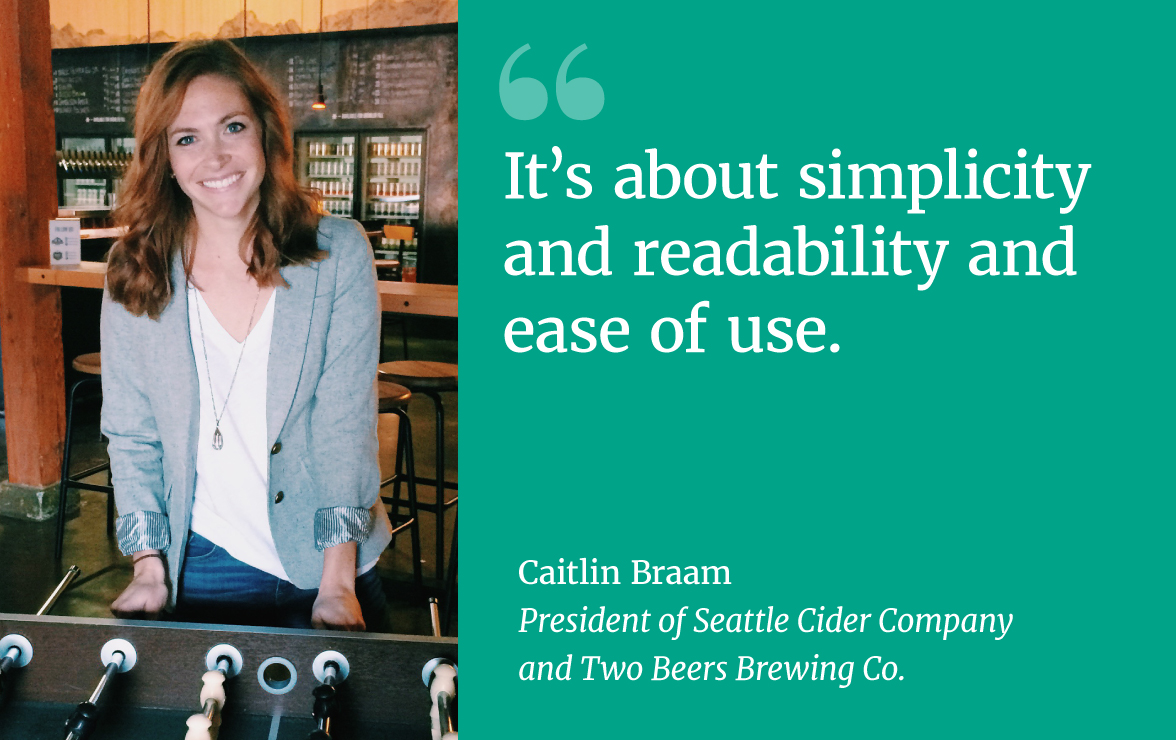 Caitlin Braam, President of Seattle Cider Company and Two Beers Brewing Co., spoke to us about how important labeling is to get your cider off the shelf: “The look and feel of the cans needs to be thought out. Often times, when you go into a store and you look on a shelf, you can’t tell if something is cider or beer. So, we go out of our way to create packaging and labeling so you can tell that it’s cider, what the brand is, what the abv. [alcohol by volume] is…It’s about simplicity and readability and ease of use.” Cook also commented, “If cider is going to be taken seriously and if it is going to appeal to new and different demographics, they’ve got to be enticed by a compelling message.”
Caitlin Braam, President of Seattle Cider Company and Two Beers Brewing Co., spoke to us about how important labeling is to get your cider off the shelf: “The look and feel of the cans needs to be thought out. Often times, when you go into a store and you look on a shelf, you can’t tell if something is cider or beer. So, we go out of our way to create packaging and labeling so you can tell that it’s cider, what the brand is, what the abv. [alcohol by volume] is…It’s about simplicity and readability and ease of use.” Cook also commented, “If cider is going to be taken seriously and if it is going to appeal to new and different demographics, they’ve got to be enticed by a compelling message.”
Master Tip: Don’t hire your friend to design your label. Caitlin Braam emphasized to us, “Hire a firm to do your design. It is worth every penny to find an agency you trust and can return to.” Friends and family are great to consult about your designs, but are often too close to the situation to be able to create a discerning label that will appeal to the eyes of the consumer.
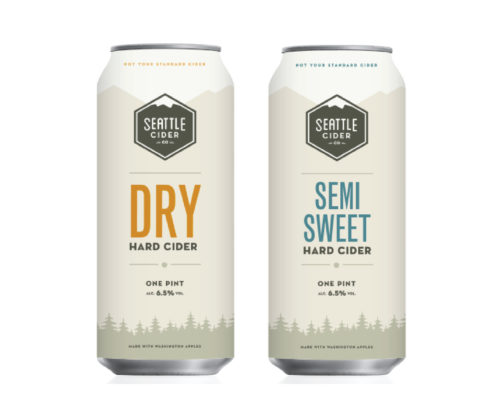
Incorporate innovative, recognizable aesthetics into your labeling and packaging. Give them a visual sensation that they won’t be able to forget.
Elder’s philosophy says it all: Develop “a cohesiveness of design, a unified look.” We’re not just talking bottles and boxes – we’re talking signage, tee shirts, koozies, etc. Take this opportunity to fully develop the look and feel of your brand, and most importantly, keep your design consistent (we’ll touch more on this later).
Master Tip: Play around with textures. New technology is providing a number of options for can and bottle textures. Not only should your label be visually recognizable, but a textured label leaves a lasting impression – literally.
Build a Website People Care About
On average, users spend only about 7 seconds on a website before deciding if they should stay (Tribute Media). For you, that means you’ve got a very tiny window to show potential customers what your brand is all about, and then, to make them care about it.
Communicate your branding by making it visually appealing. With spirits, you can have a bit more fun than if you were, say, a college or a law firm. But again, play to your demographic and stay consistent. If what you’re going for is an exciting and frisky feel, punch your users in the face with that as soon as they enter your site. On the other hand, if yours is more of a clean-lined, sophisticated brand, you can create an aesthetically pleasing eloquence with your home page.

Perhaps most significantly, demonstrate what is important to you as a brand. To Caitlin Braam and Seattle Cider Company, that would be education and edification about the cider industry:
“People don’t know how to talk about cider, and it’s so important to have accurate words to describe cider. The more information and more verbiage you use, the more interested they are in the process. Having the education is crucial on our website. Cider has its own lexicon that hasn’t been developed, and we need to educate people so that they know what they’re getting.”
What’s important to your brand? That’s one answer we can’t give you. Really hone in and decide what matters to you and your company, and use your website to communicate that to your audience in a manner that makes it important to them, too.
Social Media
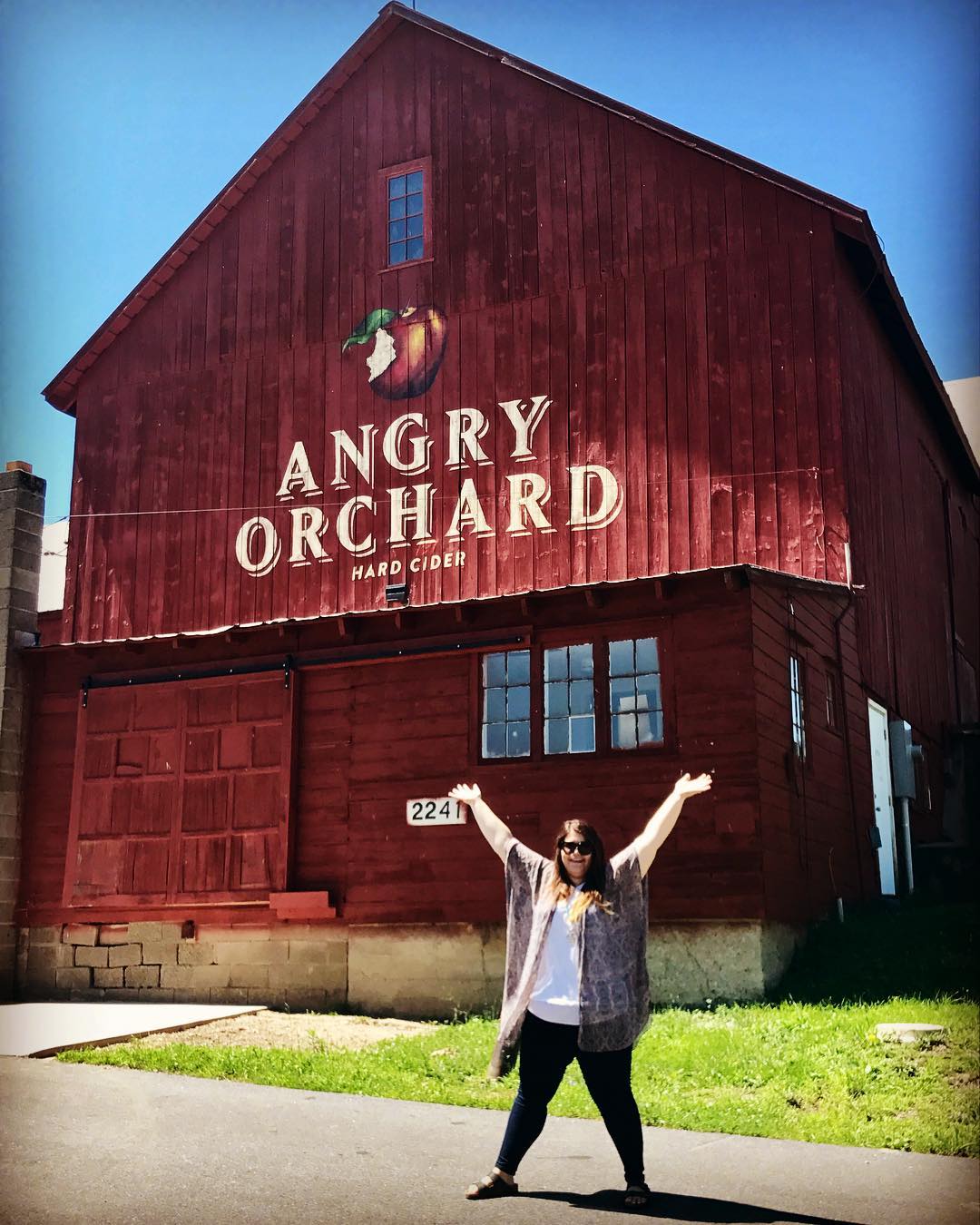
“It’s crucial.” – Gabe Cook, The Ciderologist
There you have it. An engaging, active social media presence is of massive importance to your cider marketing campaign and for achieving a loyal following. Braam told us, “People want to invest in something they believe in…something that helps a brand grow and helps fans really want to get involved.” That’s what social media does for cider brands. “Social media gives an inside look into what we do and how we do it.”
Which platforms to use
A lot of this is going to depend on demographic. Braam said, “For Two Beers we use Facebook because that’s a slightly older crowd. But we use Instagram for younger audiences.” Do your homework, and discover the social media tendencies of your target audience. You should have a semi-active presence on all the major social platforms – Facebook, Instagram, Twitter, Pinterest, etc. – but learning about which ones your key demographics follow will help you prioritize your social media campaign.
As previously mentioned, the aesthetic appeal of your brand is half the battle of getting consumers to try and like your cider. Luckily, Instagram is designed especially for this purpose. Utilize Instagram to showcase the visual quality of your cider house, tasting room, customers, and landscape. Check out New York’s 12 Most-Instagrammed Cideries to see how your brand can utilize these tactics!

Master Tip: Try Instagram Stories. According to Caitlin Braam, these are “great for giving behind-the-scenes” peeks into the day-to-day hum-drum of the cider brewery. Do a Story Takeover, featuring someone in the cider house who can walk your followers through the ins-and-outs of your brand and your process. This will make your fans feel more familiar with your brand, like they’re on an exclusive tour.
What to post
This is where you get to really have fun with social media. Regardless of your target demographic, people want to feel as if they are involved in the process, to see “more than just the can,” according to Braam. Take a selfie in the distillery. Snap a panorama of your packed cider house. Show the orchard. Take a Boomerang of the pressing process. You can show so much more than just a picture of your cider. Also, take advantage of social media to appeal to your community; this doesn’t necessarily mean locals. This goes back to what’s important to your brand. Are your followers hikers? Foodies? People with beards? Your social media presence should reflect your community, so that your following can expand within and past those niche categories.
Curate Meaningful Content
Blogs, stories, social media posts, emails – written and visual content are what pushes your name out and establishes your authority and voice in your industry. Not only is content essential for SEO purposes (we’ll get to that later), but it’s even more important for establishing a brand voice that consumers will recognize and search for.
“It’s about developing a narrative that people get to know,” Gabe Cook told us. “But it’s not necessarily about volume. Frequency of communication is important, but you have to have something to say.” For cider brands, there are plenty of options for you to accomplish this and have fun with it. For example:
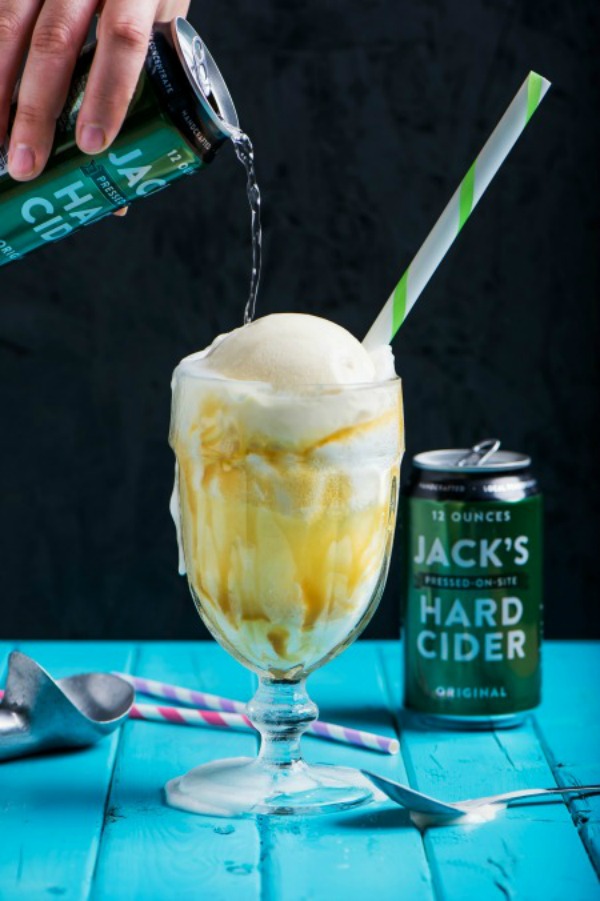
Blogs: these are great for building up content, honing that brand voice, and educating consumers on the vocabulary of cider. “Tannin: What is it and How Do I Know If I’m Tasting It?”, “Three New Flavors Coming Out This Year”, “The History of the Brix Scale” – blogs like these are great ways to introduce consumers to your brand and to the cider industry.
Recipes: recipes encourage your customers to use your products in a fun and innovative way that will keep them coming back. They also encourage consumers to treat cider more like you would a fine wine, pairing it with food and turning it into elegant cocktails. In order for the cider industry to be accepted into more audiences, it needs to be showcased as more than just an easy, session ale.
Email campaigns: emails are great for updating your followers on recent news and local events your brand is involved in. They communicate and engage with your community in a concise manner (if done right), and ensure your relevance to your loyal fans.
Master Tip: Share your content across media. Posted a blog to your website? Great – now share it on Facebook. Shared a great recipe on Pinterest? Brilliant – post it to your site, too. Create content that is shareable across platforms with minimal tweaks. This will make it easier for your content to be seen and shared, and will save you time and effort long- and short-term.
Understand your audience(s) with data
There’s more to understanding your audience than just raw sales figures. Although sales are the be-all, end-all of sustaining and growing a business, there are lots of supporting metrics that you can access with digital tools. The data you get can help you understand what’s happening on a granular level; it could support or challenge your assumptions and help you uncover new opportunities.
“Whoever the lucky folks are that are drawn to your brand, those are the [kind of] people for whom you begin your cider marketing campaign,” says Cook. “Rather than deciding who you want to market to and then creating the product, you should create your product first, then market to them.”
To get started, you should be capturing people’s opt-in information; at your physical location and digital properties, have a clear ask to sign up for email updates or like your Facebook page. Using Facebook’s Audience Insights tool, you can use these opt-ins to see demographic information like gender, age, location, income, homeownership, whether or not they have kids, and lots more. You can also see the most common brands that they like; this can be a great way of figuring out who to partner with. For example, if you see that an inordinate number of Grateful Dead fans like your cider, maybe you should find a way to make a special release Deadhead vintage. You might even discover that you have two distinct audiences that like your brand for different reasons.
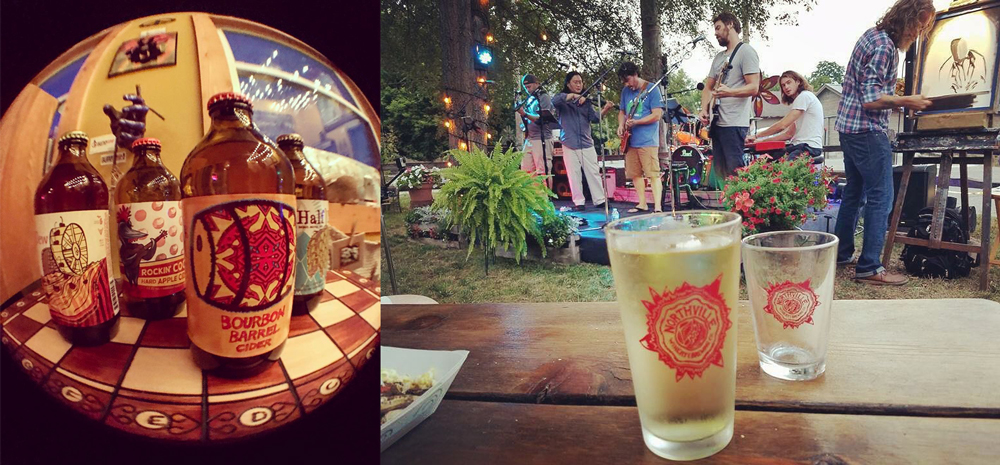
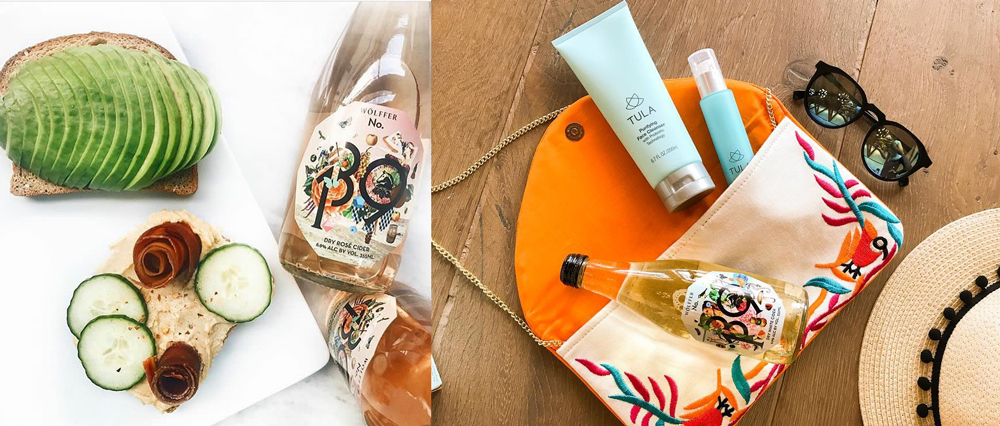
An example of this kind of audience reverse-engineering is in our recent blog post “19 Insights about NY-19 (According to Facebook).” We uploaded the full voter rolls to Facebook and discovered what brands and demographic differences and similarities exist between Republicans, Democrats and independents in our district.
In Braam’s experience with Two Beers Brewing Co. and Seattle Cider Co., data helped them figure out a clear split in their audiences.
“[We found that] putting up posters and traditional marketing plays more to our older crowd,” she said. “With our younger demographics, [we found] a shorter attention span. They’re more willing to explore what they taste, so, these are are the people to whom we say, “Ok, you drink our berry cider, but have you tried it as a cocktail?”
Take Advantage of SEO
SEO, or search engine optimization, is 100% necessary for local cider breweries, especially with the development of cider licensing across the country (thanks, Joel Elder, for enlightening us on this). We know that big beer brands dominate a majority of store shelf space. But, the way that cider licensing is changing (especially for us New Yorkers) makes getting your brand on grocery store shelves not such a requirement. Now, you can sell by the glass, directly to the consumer, with no middle man, right in your very own tasting room.
Why does this matter for SEO? Well, how are you going to drive customers to taste your cider in-house if no one can find you or even knows who you are? The purpose of search engine optimization is to help Google match your brand to what consumers are searching for, helping it rise through the ranks.
We won’t get into all the technical bits here, but the most important thing your brand needs to focus on for SEO is your keywords. This doesn’t mean just saying “cider” a million times throughout your content (because, hopefully, that word is generated enough in your content anyway). This is using your location and what your known for to generate phrases in your content that will help your ranking. So, if you’re known for, say, organic cider in Ulster County, NY, incorporate similar phrasing into your content (blogs, social media, etc.).
Master Tip: Don’t stuff. “Keyword stuffing” is a common mistake, and it will hurt your ranks, rather than help them. Include your keywords and phrases naturally, instead of forcing them into sentences where they just don’t fit. You’ll maintain a solid keyword density, while making your content much easier for readers to consume.
Maintain Brand Consistency
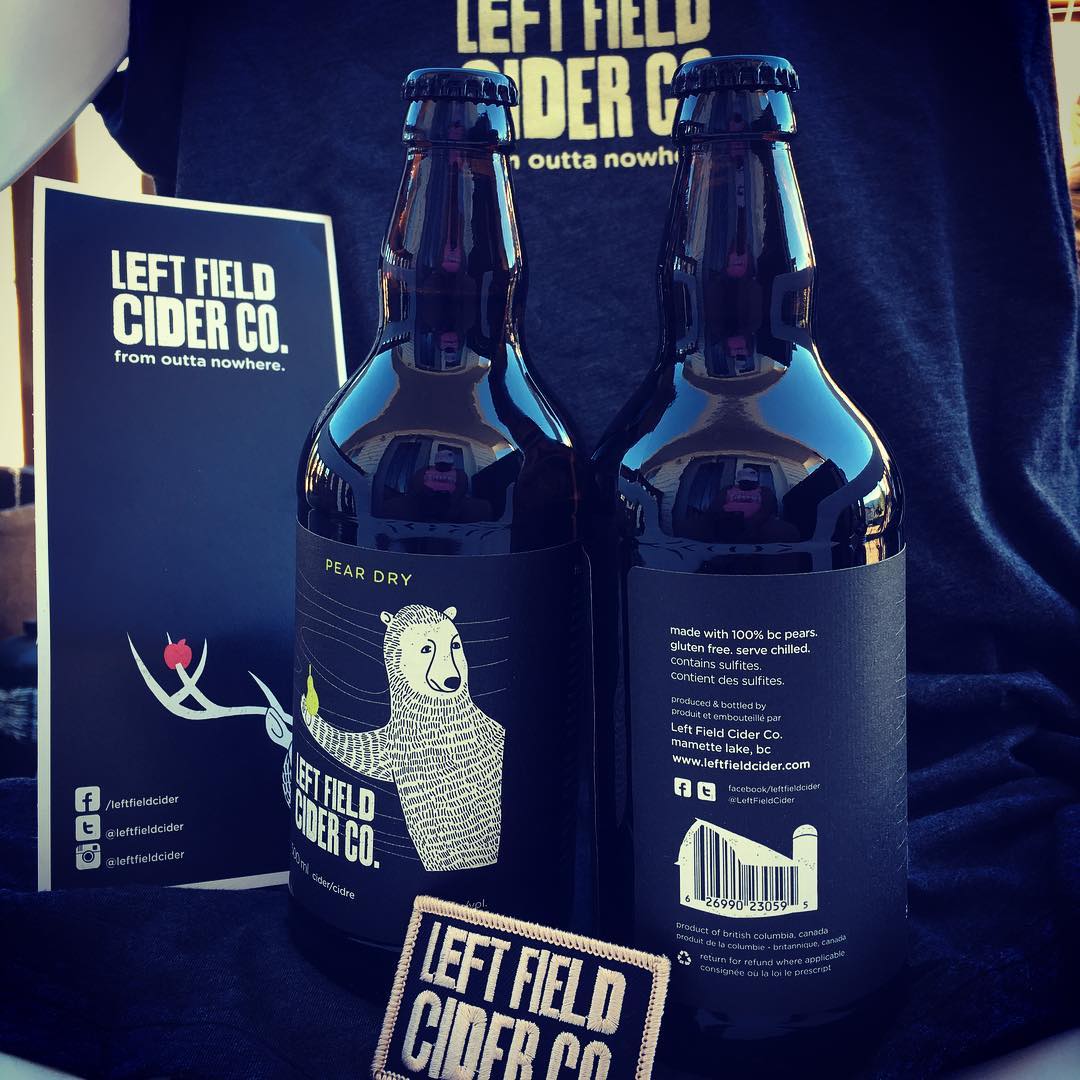
Although we’ve listed this toward the end, it’s not because it’s not important. It’s actually because it’s so important that we want to ensure it’s one of the last things you read before you leave this page. Your story, your labeling, your website, your social media, your written and visual content – all of this tireless work you put in becomes a lot less helpful if it does not remain consistent. The same voice that you use to post a silly photo on social media should be the same voice that educates the consumer in your blogs. The visuals that captivate your audience on your website should emulate the same style and aesthetic of each, individual can selected by your customers. Caitlin Braam emphasized, “Consistency in branding is essential, no matter what kind of company you are. We [Two Beers Brewing Co. and Seattle Cider Company] are consistent. When you see it on a shelf or at a bar it’s consistent. So, no matter where you are it’s going to be talked about the same and it’s going to look the same.”
We understand you’re trying to expand your reach to new demographics and audiences – and we support you wholeheartedly! But you do this by trying innovative communication and new media channels, not by creating a melting pot of brands. “Don’t produce too many different products for too many different audiences,” Cook told us. “Maintain a clear line of understanding.”
Select a Marketing Agency That Makes Sense for You
There’s a popular mentality among professionals today, which is the “pull-yourself-up-by-your-bootstraps”, “if-you-want-it-done-right-do-it-yourself” mentality. And we respect that. However, Gabe Cook explained that it’s not about making sure you do it all yourself; it’s about “recognizing what your skillset is, and more importantly, what it isn’t. If you’re not great at the branding and digital bit, get someone to do it for you. If you’re not good at the design bit, get someone to do that for you.” You’ll need a cider marketing company whose training and experience complements yours and your brand, not overshadows it.
“It’s that skillset,” Braam told us. “New cideries are so busy, the last thing you’ll think about is writing a press release or posting on Facebook. Having an expert that sees different stories and angles that you didn’t is so valuable.”
“People don’t always have the industry insight,” according to Joel Elder. That cider marketing insight can be of incredible value to cider companies, especially if the agency is passionate about cider, too. If you can find a marketer that has the cider marketing prowess you need, can speak the language of your industry, and is passionate about what you do, you’ve hit the jackpot.
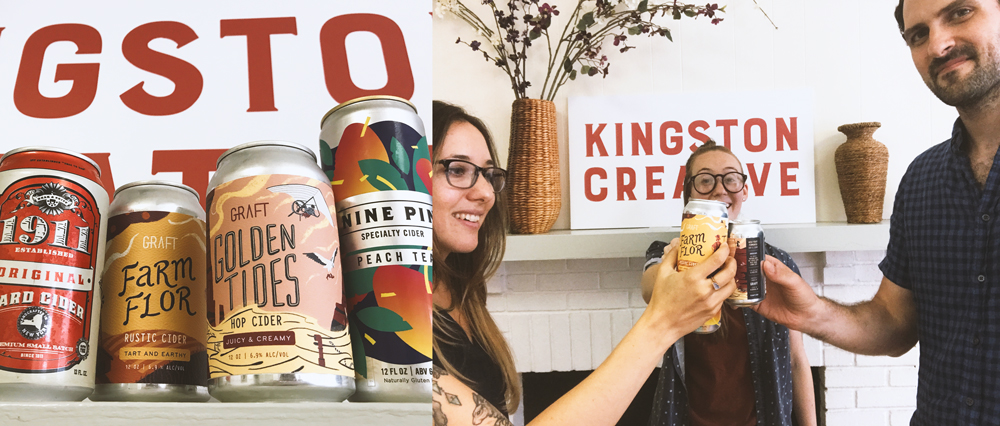
Get Started
Despite the fact that this is the “Ultimate Guide to Cider Marketing”, cider is an ever-evolving industry in its youth. New ideas and tools will emerge, and you need to be ready to seize marketing opportunities that will inevitably come your way. In the words of The Ciderologist, “Cider has the capability to be the finest of fine drinks, with as much attitude as craft beer or wine. Shoot high. Aim high.” Experiment with innovative ideas, and if they fail, grab another pint, and keep trying.
Kingston Creative is a full-service marketing agency located in Kingston, NY, amidst the Hudson Valley and Catskills. We provide services like branding, marketing campaigns, and website design to people and organizations that want their passion for what they do to translate into results.
